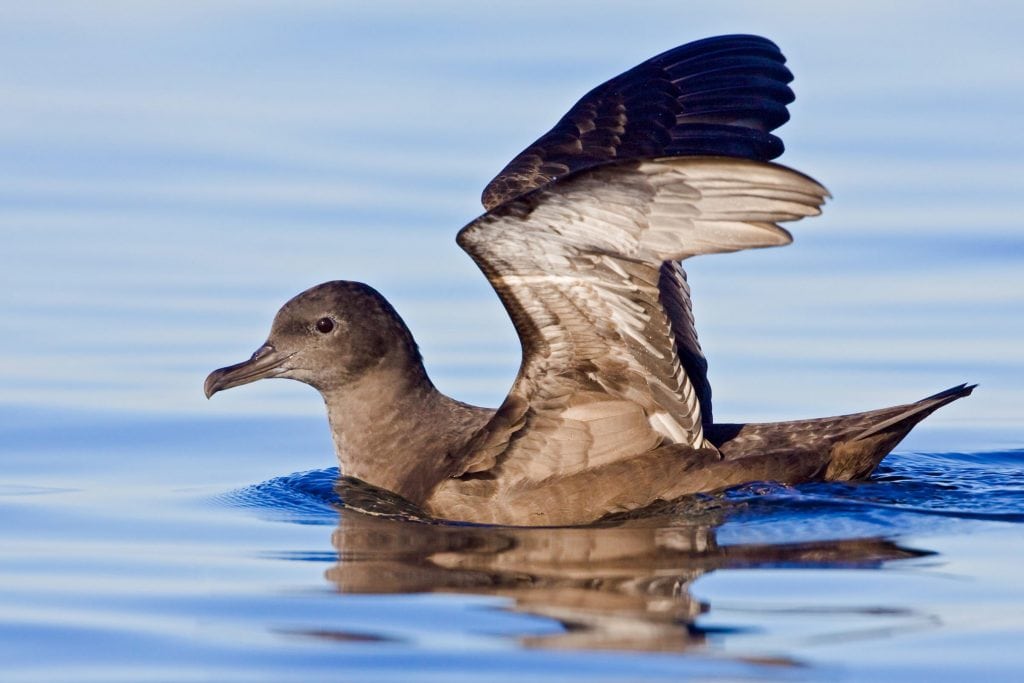This bird lays a single egg every 10 to 20 months in a cavity or burrow, for protecting the young against aerial predators. During the breeding season, the male and female birds emerge from their nests at night, that way the chances of being caught by predators are small.
Both parents collect food for their baby. After eight years of life, Audubon’s shearwater reaches sexual maturity. They usually mate for life and will always return to the same nest year after year.

Audubon’s shearwater breeds mainly on oceanic islands, coral atolls and rocky offshore islets, where it builds its nest on cliffs and earthen slopes. It spends the majority of its life gliding above marine environments, including both coastal and deep waters.
They feed on small planktonic crustaceans and fish larvae, which they take from the surface, and on small fish, and squid, which they catch by plunge diving to depths of about six feet. It is not uncommon to see them in fishing in large flocks, or in mixed flocks with pelicans and brown noddies.















